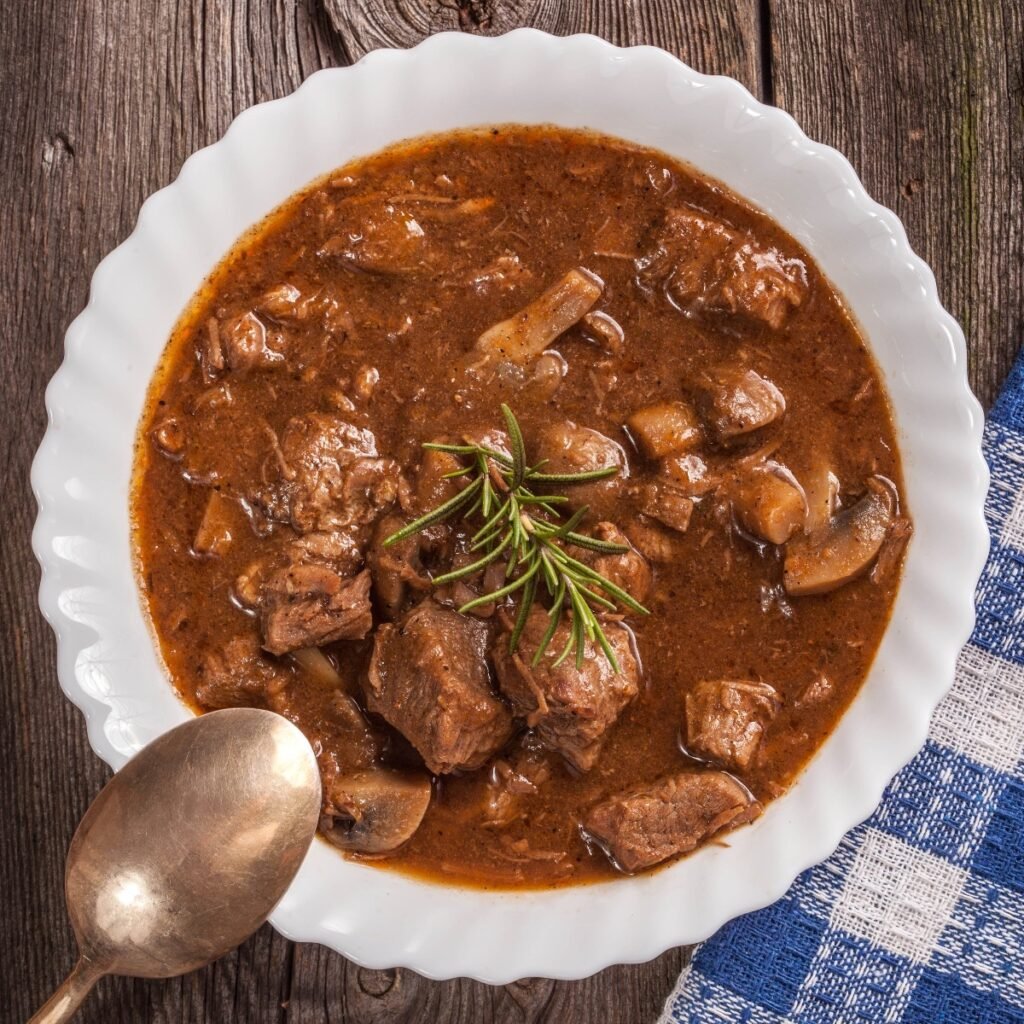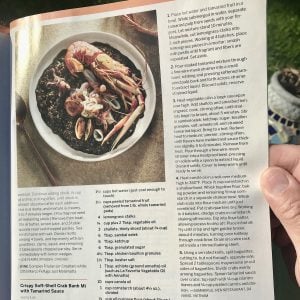How to Fix a Doughy Tasting Beef Stew
Here’s a quick post today in response to a question I received from Dave. He asks:
I made a lovely beef stew, but after removing the meat and vegetables, I made a flour/water slurry to thicken the gravy. When we ate it, it had a doughy taste. How can I fix this, please?
The Fix
To fix a gravy with a doughy taste, you’ll need to cook it longer to remove the raw flour flavor. The doughy taste occurs when the flour in your slurry has not been cooked long enough.
Here’s how to fix it:
- Return the gravy to heat and bring to a gentle simmer
- Cook for at least 5-10 more minutes, stirring frequently
- Taste periodically until the doughy flavor disappears
For future reference, try these techniques to avoid the issue:
- Use a roux (cook flour in fat before adding liquid) instead of a slurry
- Make sure to simmer the gravy for several minutes after adding any thickener
- Consider alternatives like cornstarch, which doesn’t have that raw flour taste
You could also add a splash of wine, Worcestershire sauce, or some herbs to help mask any remaining doughy flavor.
Cooking with Slurries
Slurries are often used to thicken soups, stews, and sauces. They are typically made by mixing starch (cornstarch, flour, or arrowroot) with a liquid to create a smooth, pourable mixture. While they are effective at thickening, some slurries can impart a doughy or raw taste to stews if not handled correctly. Here’s why this might happen and how you can prevent it:
Why Slurries Might Give a Doughy Taste
- Raw Starch Flavor: If a slurry is not fully cooked or incorporated into the dish, the raw starch can give a doughy or floury taste. This is common with flour-based slurries.
- Overuse of Starch: Too much starch in the slurry can lead to an overly thickened texture, which might also contribute to an off-taste or mouthfeel.
- Inadequate Cooking Time: If the slurry is added too early or needs more cooking time, it can leave a raw flavor. Starches need to be cooked through to eliminate any raw taste.
How to Prevent a Doughy Taste
- Cook the Slurry: Always ensure that the slurry is cooked long enough to remove the raw starch flavor. After adding the slurry to the stew, let it simmer for a few minutes, stirring frequently, until the desired thickness is achieved.
- Use the Right Ratio: Use the appropriate amount of starch for the volume of liquid in your stew. Typically, a 1:1 ratio of starch to liquid (by volume) is a good starting point. Adjust as needed based on the thickness you desire.
- Incorporate Gradually: Add the slurry gradually, stirring constantly to prevent lumps and ensure even distribution. This helps to avoid clumping and ensures the slurry is thoroughly mixed into the stew.
- Alternative Thickeners: Consider using alternative thickeners like arrowroot or tapioca starch, which may impart a more neutral flavor compared to flour. Also, using a roux (a mixture of flour and fat cooked together) can provide a smoother, richer flavor and help prevent a doughy taste.
- Pre-cook the Starch: For some recipes, you might cook it separately before adding it to the stew. This pre-cooking can help eliminate any raw taste.
- Taste and Adjust: Always taste your stew after adding the slurry. If it tastes doughy, let it cook a bit longer or add a small amount of seasoning to balance the flavor.
By carefully managing the cooking process and using the proper techniques, you can effectively thicken your stews without compromising flavor.
















4 Responses
I always make the thick gravy right after browning the beef. I then cook the browned beef and veg’s in the gravy. Seems like this gives everything a better taste.
Good tip LADawg
Another alternative is to cook the flour in a bit of oil making a nut-brown roux, and add this to the juices as the thickener. Make for good flavor, no raw taste, and gives you some options to flavor the roux.
You did not offer any fix…just how to prevent it. Not helpful.
Hi Kelsey, I just posted a fix. Hope this helps.